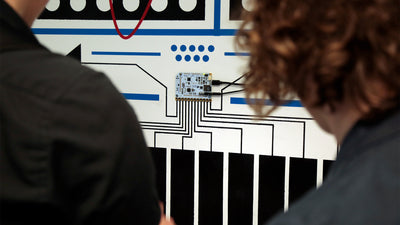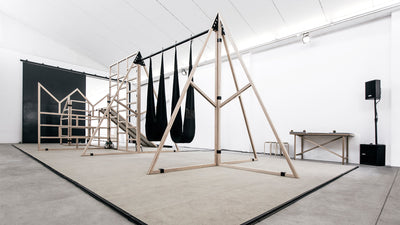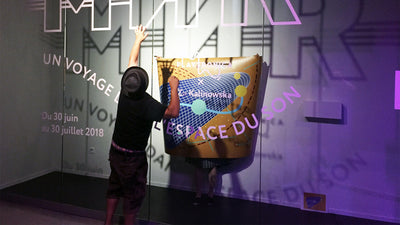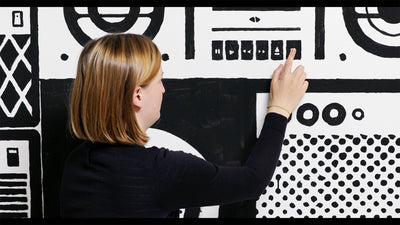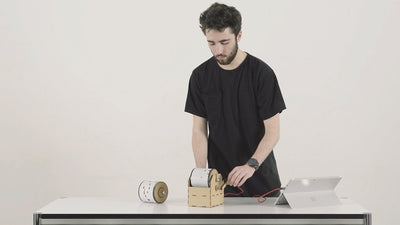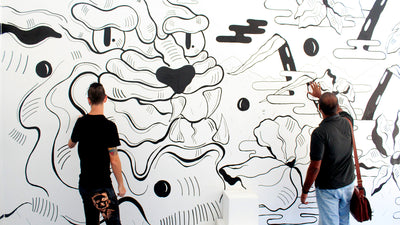Touch Chord - A Touch Sensitive Breath Controlled Instrument

We've been super excited to show this prototype off for a while, and now its here! We've teamed up with designer and musician Vahakn Matossian from Human Instruments to create an expressive digital instrument. Unique in its form and output, this physically dynamic instrument uses code as a means to allow for complex musical expression.
The inspiration for this project came in the lead up to the London Olympic games in 2012, when Matossian was working side-by-side with the British ParaOrchestra. While working with the musicians there, Matossian, who has a background in music and product design, began designing devices tailored to individuals' physical constraints. He thought that by integrating capacitive touch sensors as keys, he could perhaps create more accessible instruments.
Working alongside musicians who had full dexterity in their hands and fingers — but perhaps lacked the strength to manipulate and control traditional instruments — led Matossian to explore alternative means to instrument-design. He began to investigate the use of open source hardware and sensors as a means to developing new interfaces to allow control over notes and music via synthesisers. Expression was fundamentally the key goal.
Working alongside the engineering team at Bare Conductive and London musicians John Kelly and Cosmo Sheldrake, gave Matossian a wide range of parameters from which to test the physical design of the instrument and iterate the code in order to get the best expressive output. Painting the sensors (keys) directly onto a wooden base meant the design could be easily and quickly reconfigured to suit different positions, or the code on the board modified to have alternate ranges in expression and response.
The flexibility in form and sensitivity to touch which was built into the instrument, means it can be used by musicians with ranging levels of mobility and strength. Kelly, a London musician who struggles to play chords on traditional keyboards and string instruments, explains the benefits. “Usually a chord is three notes so you need at least three fingers, so that can be problematic” he says. “This device enables me to play a full chord with just one finger."
For Matossian, the beauty of the instrument lies in the marriage between design and programming that allow for the creation of a digital expressive instrument.
Vahakn’s understanding of how fine control of an instrument allows musicians to express emotion and musicality, means the instrument was designed to allow for partly variable note-to-note delays (to stop the instrument sounding robotic), to linking the pressure sensor to MIDI CC breath control messages.
Technically one of the most interesting elements of this was using the continuous data from the capacitive sensing platform on the Touch Board to provide velocity data for chord inversion – allowing a lot of modulation with a small number of contact points.
This instrument is unique in that it not only provides a flexible and expressive means for disabled musicians to engage with music, but also allows a new way for able bodied musicians to play and compose music.
This project won the Graham Massey choice award at Music Tech Fest in Umea, Sweden. Massey — from 808 state — was blown away by the potential of the instrument. "It’s a really expressive instrument that can be useful to everyone. I can't wait to have a go on it!"
As for us, we're really excited about what this instrument means to musicians of all abilities, and look forward to seeing what new development our technology will enable in the field of digital interfaces.
We love it when you share your projects! Post your project on Instagram, YouTube, or Twitter, and make sure to tag @bareconductive or use #bareconductive. You can also send your videos and photos to info@bareconductive.com so we can post them on our site for the world to see.


